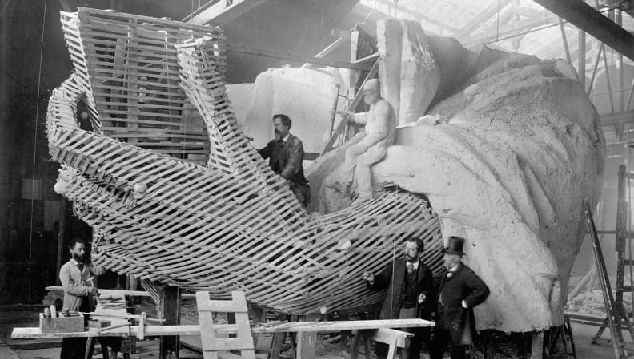On October 28, 1886, New York baptized this statue, which is also known by this name: “Liberty Enlightening the World”. But this statue first carries a French and Lorraine story. This very long story began in Moselle in 1865, in Glatigny, east of Metz. On April 21, 1865, in the evening, Edouard de la Boulaye gathered some friends in his second home in Glatigny. Edouard is a renowned jurist, he chairs the Comparative Legislation Society and will later be a deputy, then a senator and mayor of Versailles. Above all, he was a fervent Republican, opposed to the Emperor Napoleon III, whose authoritarian excesses he denounced. Edouard de la Boulaye is an admirer of the American political system and of the philosopher Alexis de Tocqueville, one of the most famous political philosophers in the world who, let us remember, lived part of his youth in Lorraine (his father was prefect of Moselle ). And so, on April 21, 1865, there were a few guests around Edouard’s table, mainly oils and a certain Auguste Bartholdi. Auguste is a sculptor, painter, young (he is 30 years old) and the table will turn to him to create a majestic statue that the French Republicans would offer as a sign of friendship to their American colleagues, to commemorate the independence of the States -United. The origin of the statue is therefore from Lorraine and before it is inaugurated, 20 years later, it must be officially donated to the United States. This is where we come back to Lorraine since the official deed of donation of the Statue of Liberty is signed by the Vosgien Jules Ferry, who is then President of the Council (today we say Prime Minister). And then the story with Lorraine continues, because on the day of the inauguration in New York, a huge crowd rushes to admire the statue and in this crowd, there is a smart guy, it’s Emile Gaget, a Meusien of Dun-sur-Meuse. It was in the workshops of his company, in the 17th arrondissement of Paris, that the statue was assembled. On the day of the inauguration, in New York, he has the good idea to sell miniature reproductions of the Statue of Liberty; it is also said that the word gadget comes from him, Emile Gaget, and his little statues. The Lorraine story of this world monument is not yet over since we will long wonder about the person who inspired Bartholdi for the face of the statue. It seems proven today that it is that of a young American named Sarah, wife of Adolphe Salmon, born in Donnelay, near Dieuze. Bartholdi had explained that Sarah, his friend’s wife, had the traits he was looking for: the Roman nose, the perfect brow bone and the enigmatic eyes.
fbq('init', '188365081922073');
fbq('track', 'PageView');
source site-36
